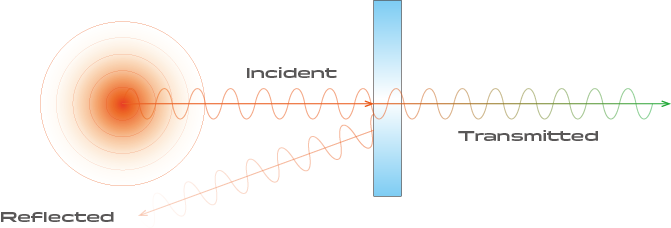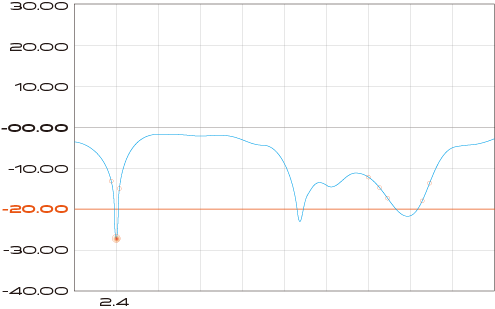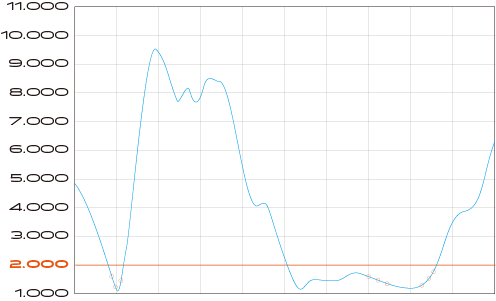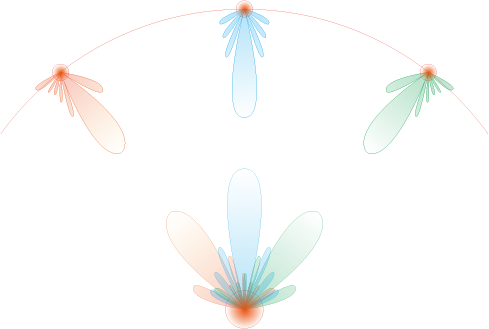Key Performance Parameters of Antennas
In today’s world of rapidly expanding wireless and high-frequency applications, antenna performance plays a critical role in determining the overall effectiveness of a communication system. Whether it's for connected vehicles, 5G base stations, IoT devices, or satellite systems, designing a reliable and efficient antenna starts with a solid understanding of its key performance parameters. This article outlines seven essential metrics used in antenna design and testing, helping engineers and developers gain clear insight into the fundamentals that drive signal quality and system efficiency.
What Are the Key Parameters of an Antenna?
Return Loss (S11)
S11 represents the amount of input power reflected back from the antenna. The lower the S11 value, the better the impedance match. You can think of it like shouting in a cave: a faint echo means your voice energy traveled forward effectively—just like a well-matched antenna.

Antenna reflection refers to how electromagnetic waves behave at different frequencies—some energy is reflected back while the rest is transmitted forward. It’s similar to shouting in an echoing cave: part of your voice bounces off the walls (reflection), and part travels deeper into the cave.

In practice, engineers aim for S11 values below -10 dB at the desired frequency bands (e.g., 2.4 GHz or 5 GHz), ensuring optimal matching between the antenna and transmitter.
Voltage Standing Wave Ratio (VSWR)
VSWR indicates how well the antenna is matched to the transmission line. A VSWR below 2 is generally acceptable in base station testing. If the value is too high, fine-tuning the matching circuit may be necessary.

Imagine watering your garden with a hose. A tightly connected hose means water flows freely with minimal leakage—just like a well-matched signal path. A VSWR close to 1 means maximum signal efficiency.
Gain and Efficiency
Gain (measured in dBi) indicates how much power is radiated in a specific direction. Think of it like a flashlight: the narrower and more focused the beam, the brighter it shines—high gain. Efficiency, on the other hand, reflects how much input power is effectively radiated. If you light up 100 bulbs but only 70 work, you’ve got 70% efficiency.

High-gain antennas support long-range communication; IoT devices benefit from high-efficiency antennas.
Directivity
Directivity describes the antenna’s ability to focus energy in a specific direction. Measured in dBi, a higher value means more concentrated radiation, which enhances signal strength, minimizes interference, and improves transmission distance.

Directivity describes an antenna’s ability to focus energy in a specific direction. This improves signal strength, minimizes interference, and increases transmission range.
Radiation Pattern
This parameter shows how the antenna radiates energy in space. It may be omnidirectional (uniform in all directions) or directional (focused in specific directions), depending on the application.

Radiation pattern types: Omnidirectional vs. Directional.
Polarization
Polarization refers to the orientation of the electric field of the radiated signal—either linear (vertical or horizontal) or circular (left- or right-hand). Think of it like jump rope: you can swing it up and down (vertical), side to side (horizontal), or in a circle (circular). If the jump rope direction doesn’t match your receiver, the signal gets "tangled" and doesn’t work well.

- Linear polarization: commonly used in ground-based mobile antennas.
- Circular polarization: used in GPS antennas to counter multipath and rotation effects.
Why It Matters?
Understanding these parameters is essential for designing antennas that deliver stable performance, minimal signal loss, and optimal transmission quality. At Wanshih, our state-of-the-art antenna laboratories and rigorous testing processes empower clients to fine-tune antenna performance with precision. Whether you're developing a new product or need advanced testing services, Wanshih is your trusted partner for high-frequency antenna solutions.
Whether you're developing a new product or need advanced testing services, Wanshih is your trusted partner for high-frequency antenna solutions.
